For whatever reason the deer have been particularly active in the garden this autumn. The shrubs and perennials that are protected by deer repellent have suffered no damage, but I’ve seen a few low hanging leaves eaten on a Chinese dogwood (Cornus kousa) that has never been bothered in the past. A few evergreens leaves of aucuba have been nipped, though I usually don’t need to worry about them until winter when there is less other foliage for the deer to eat.
As I was checking out the dogwood I discovered that one mophead hydrangea has nearly been defoliated by deer. The stems are green, but the leaves appear to have been freshly munched. This hydrangea is jammed between the dogwood and a large viburnum so that it is heavily shaded and barely seen from any vantage point, and though it seems to grow vigorously it flowers sparsely. I don’t recall when it was planted (probably twenty years ago), but I suspect that it was a ‘Nikko Blue’ or one of the old time cultivars that is often damaged by cold so that blooms are scarce. Since branches of hydrangeas often die back by a foot or more in the winter no real damage has been done, and if this one disappeared completely I probably wouldn’t notice.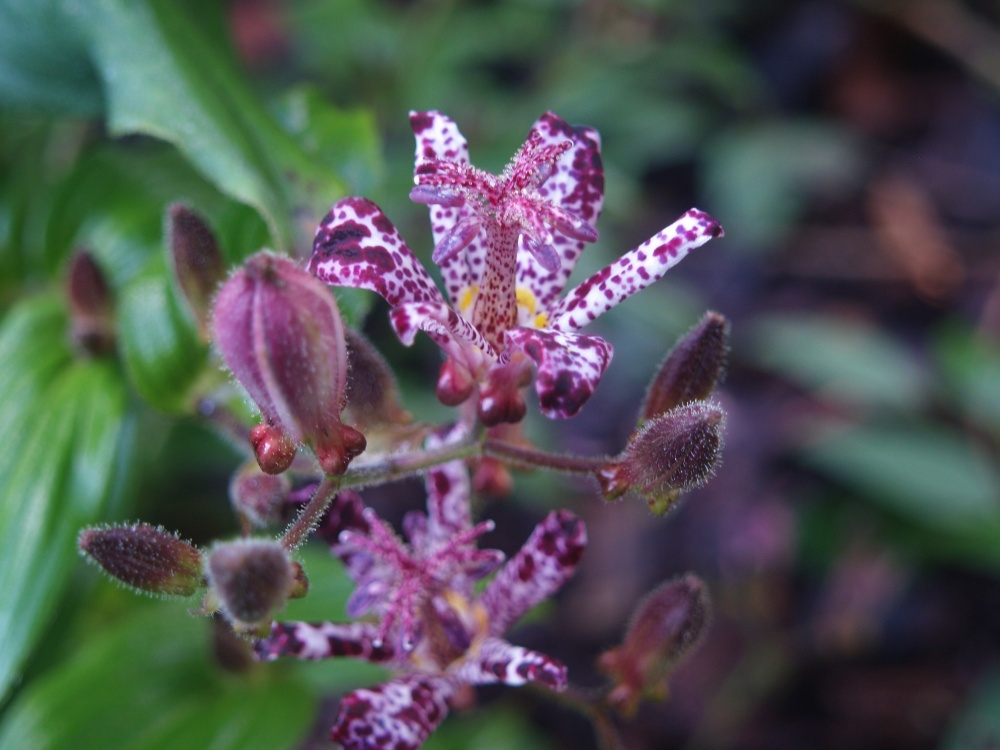
As winter cold approaches the gardener expects fewer blooms each week. The perennial sunflowers (Helianthus) flowered a bit later in September than normal and faded more quickly than in most years, and though the toad lilies (Tricyrtis, above) were as floriferous as usual, the blooms of several varieties were more short lived. But, despite the late date, our recent splendid weather is matched by a number of blooms.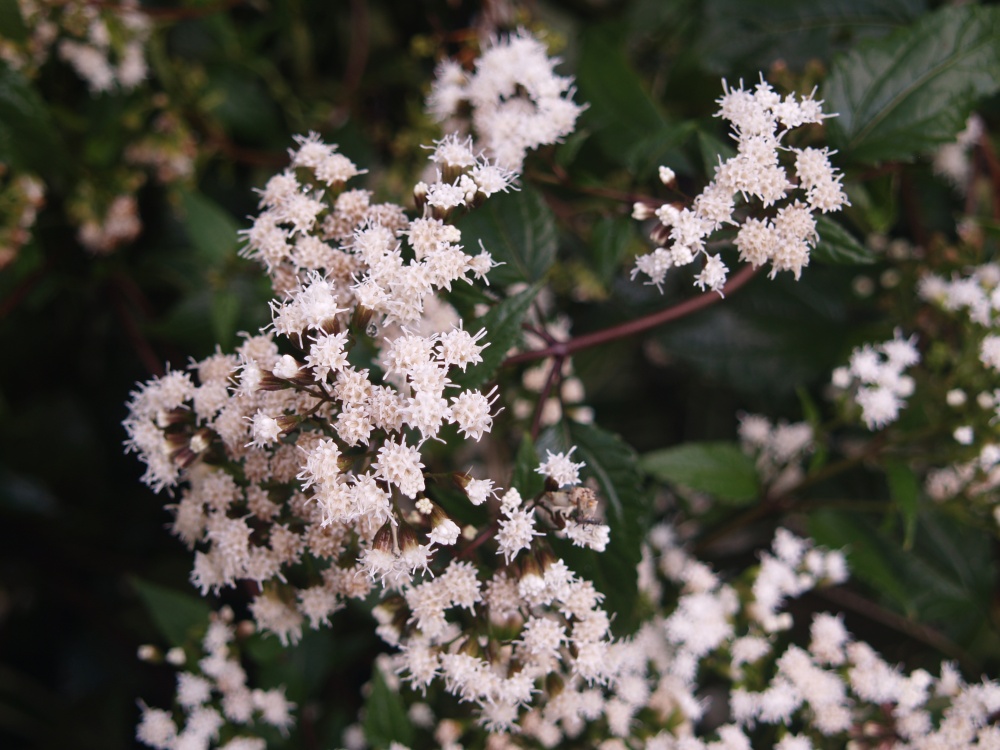
The ‘Chocolate’ Joe Pye weed (Eupatorium rugosum ‘Chocolate’, above) is fading quickly, though seedlings that popped up in shady spots in the garden are holding onto their blooms a bit longer. The native Joe Pye weeds flower in July and August, though the bloom can be prolonged by cutting the stems back so that they flush new growth in September. I have never done this, but occasionally a tall stem will break under the weight of the large flower, and the resulting growth quickly develops new blooms.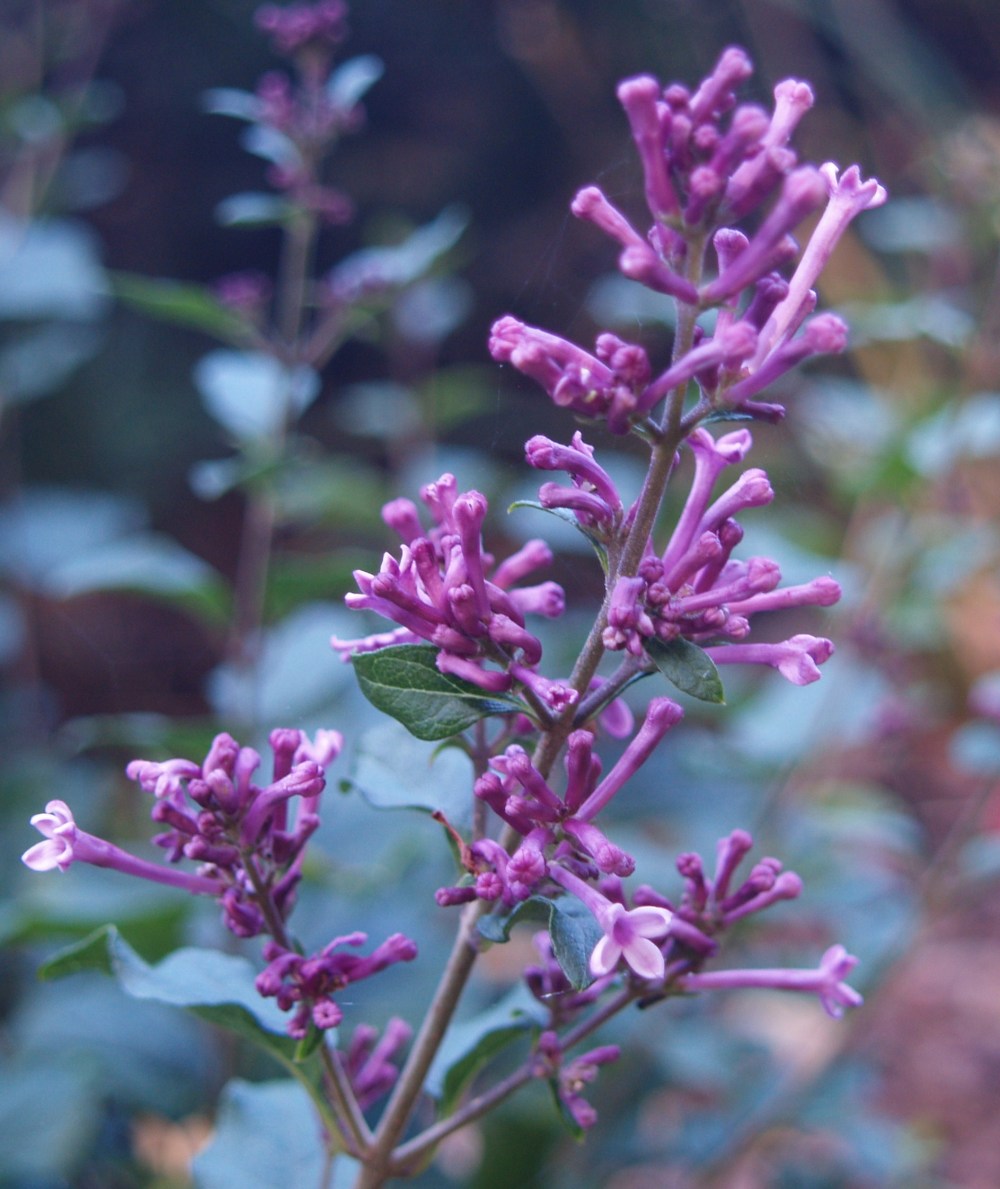
Some of the bloomers in the garden have been cut back to encourage reblooming, and so today’s flowers are the last in a series that in some instances began in the spring. The reblooming ‘Boomerang’ lilac (Syringa x ‘Boomerang’, above) flowered in the spring with the other lilacs, and with gentle pruning this is the third set of flowers. I don’t know that I’ll keep after it so regularly in future years, but I have jammed two shrubs into spots that are too small for the full grown shrub, so that it’s more likely that I’ll be forced to pay more attention to it.
A few perennials have rebloomed, and though I didn’t consciously deadhead the spent flowers I might have snapped off the flowering stem in the summer when it was finished, and in doing so encouraged another round of flowers. Several of the small grouping of foxgloves (Digitalis purpurea, above) are flowering, and if they’ve bloomed this late in the past I haven’t noticed it. One yellow leafed spiderwort (Tradescantia, below) was squashed in the summer by a clumsy oaf (I admit) so that the fragile foliage was torn from the roots, and I suppose that inadvertently new growth and additional blooms were encouraged.
The Japanese windflowers (Anemone) and tall Tatarian asters (Aster tataricus ‘Jindai’, below) have not rebloomed, but with plentiful rainfall and moderately cool temperatures their flowering has been prolonged. The aster is particularly pleasing since I have never been impressed with more compact asters that flower for shorter periods, and I am guessing that ‘Jindai’ blooms for six weeks or longer in my garden. It is a tall (nearly six feet) and coarsely leafed perennial, and perhaps it could be difficult to use in smaller gardens, but in this over planted jungle it stands above most of the crowd. On sunny days in late September and October it is often covered with bees, most commonly bumblebees, but with the rain and cloudy weather recently there have not been so many.
We have recently covered the fall blooming azaleas, hydrangeas, and roses, so there’s no need to spend any further time with them today, but we’ll bring the day to a close with the burgundy leafed shamrock (Oxalis regnellii atropurpurea, below) that continues to bloom. For whatever reason I had not tried these tiny bulbs until a year ago, and though I was of the unfounded opinion that they would be too tender, I have been surprised by their vigor. In fact, as many gardeners are aware, oxalis can be difficult to be rid of once you have it and it insists on spreading itself about. My other plantings are so thick that I have little concern for this, unless it should decide to invade the lawn. But, the foliage has remained consistently dark through the year, and even if it did not bloom at all it would be a splendid backdrop for taller plants. The delicate pink blooms are delightful, and they have increased in abundance through the late summer and early autumn.
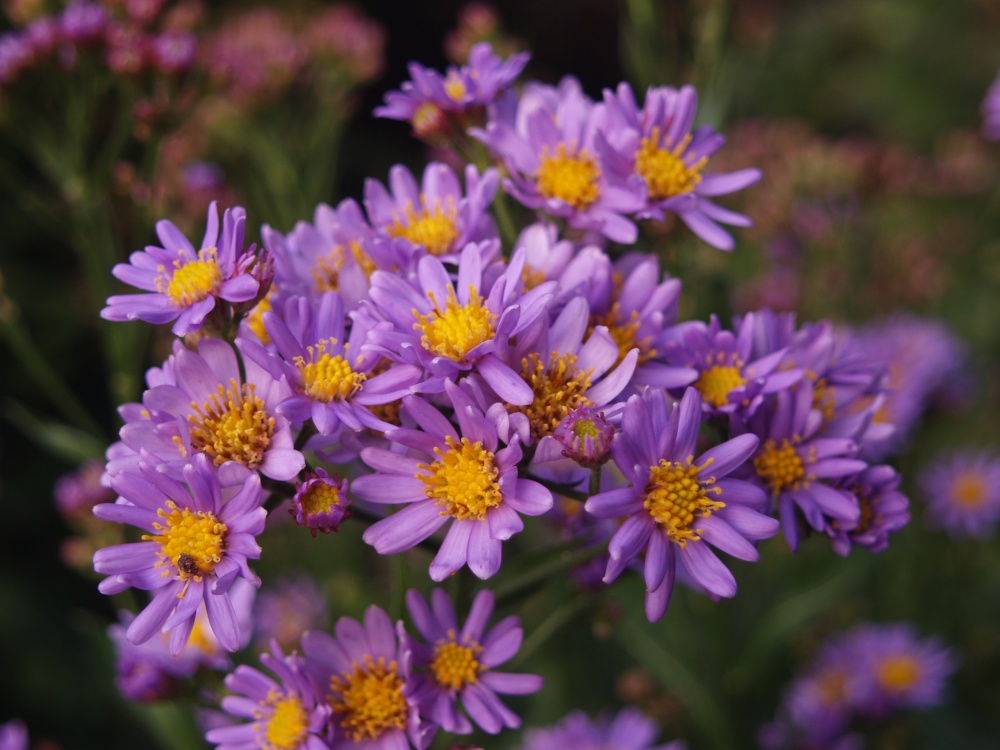
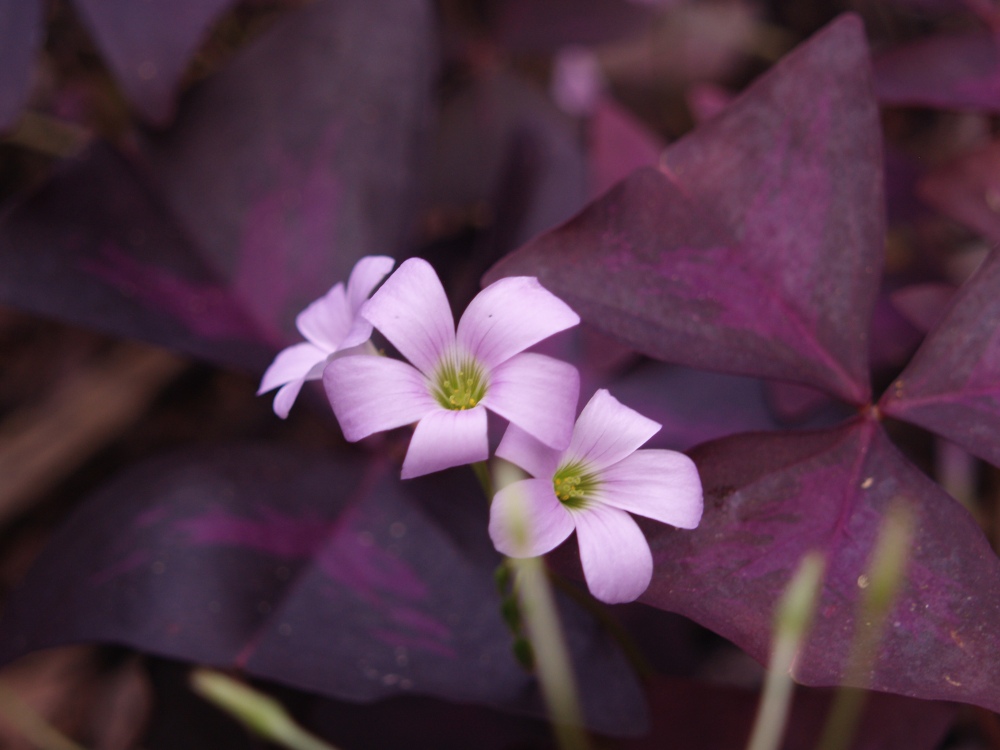
Beautiful photos, great detail!
Hi Dave, Your gardens are fabulous. Please share what deer repellent you are using. My shade garden ( with many hostas, I know, deer salad), has been left with nothing but stalks. I have tried, foil plates hung on the trees (they ate all of the phlox underneath them!), Deer Off, though not as regularly as the package suggests. Those deer repellent things that are placed on a wire stake (the dog next door ate them! The deer ignored them). Any advise?
I have several dozen varieties of hostas in the deeply shaded southern border of the garden that is only a few paces from a dense thicket where deer bed down in the summer heat. I spray at the start of each month beginning at the start of May through October. In November I will spray evergreens with a double dose to get them through the winter.
I alternate two sprays, Bobbex and Deer Away (Deer Off?), only because I was doing a comparison and wanted to see if one or the other was more effective. From my results, and others that I’ve witnessed, I believe that any of the brands should be equally effective as long as they are sprayed every 30-45 days. Whenever I hear that a repellent has failed I am confident that it was not sprayed on a regular schedule since I’ve seen that it is dependable in areas where herds of deer are regularly seen, and plants are eaten off front porches.
I am much less certain about other repellents such as coyote urine, and I have no faith in the long term effectiveness of human hair, soap on a rope, and other such deterrents.
I do not have a vegetable garden (too shady) but I’ve seen tree growers in the deer infested mountains of North Carolina use a repellent soaked tape strung around patches of young dogwoods that they swear is completely effective without having to spray individual plants.